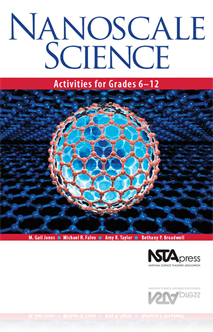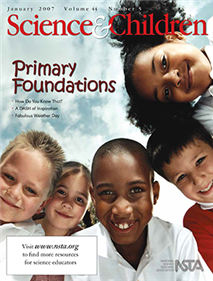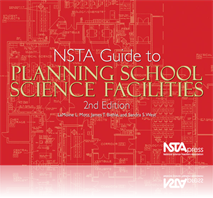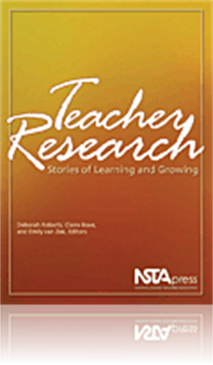All Resources
Book Chapter
Fact or Fiction: Exploring the Myths and Realities of Nanotechnology
Will clouds of self-replicating nanobots take over the world, or is this just a scene from a science fiction novel? Nanotechnology is a rapidly growing field that has huge potential for transforming our world. But the reality of advances in nanoscale...
Book Chapter
Biomimicry: The Mystery of the Lotus Effect
One of the most interesting applications of nanoscale science involves nanomimicry—or technology that mimics the unique structures of biomaterials. This activity uses the forensics approach to have students investigate various plant surfaces and th...
Book Chapter
How Nature Builds Itself: Self-Assembly
By designing and building models with Legos and placing them in a reaction chamber, students will simulate the process of molecular self-assembly. This activity provides a basis for understanding that thermal energy at the nanometer scale is a determ...
Book Chapter
At the nanoscale, a completely different set of forces and interactions are experienced by molecules and atoms than we experience at the human scale. How do properties change with scale? Why is gravity so important to our daily lives but relatively u...
Book Chapter
Shrinking Cups: Changes in the Behavior of Materials at the Nanoscale
What if you were only one inch tall? This activity explores the behavior of liquids in different sizes and shapes of drinking containers. Students explore how the size of the cup determines if the liquid will pour out of the cup. This activity models...
Book Chapter
Limits to Size: Could King Kong Exist?
Why can’t spiders be ten feet tall? Can an ape grow to the size of King Kong? Surface area-to-volume relationships help shed light on the question of the size limits of organisms. At the nanoscale, things are so small that surface area effects impa...
Book Chapter
The purpose of this assessment probe is to elicit students’ basic ideas about inheritance of genetic traits. The probe is designed to reveal the variety of ideas students have about how traits, such as fur color, are passed on to offspring. ...
Book Chapter
The purpose of this assessment probe is to elicit students’ ideas about the characteristic property of boiling point. The probe is used to find out whether students recognize that the temperature of a boiling liquid stays constant no matter how lon...
Journal Article
Perspectives: Examining the Learning Cycle
Cognitive scientists tell us that students need to relate new ideas to their experience and place new ideas into a framework for understanding (Bransford, Brown, and Cocking 2001). Thus exploring phenomena before explaining them is critical for learn...
eBook
Nanoscale Science: Activities for Grades 6-12 (e-Book)
Futurists predict that nanotechnology will be the next major scientific revolution—one with an even greater impact than the Industrial Revolution. Nanoscale Science will help your middle and high school students understand the big implications of...
eBook
NSTA Guide to Planning School Science Facilities, Second Edition (e-Book)
Science-learning spaces are different from general-purpose classrooms. So if your school is planning to build or renovate, you need the fully updated NSTA Guide to Planning School Science Facilities. It’s the definitive resource for every K-12 scho...
eBook
Teacher Research: Stories of Learning and Growing (e-Book)
Think you don’t have time to do research? How about professional growth—think that’s out of reach? Let your peers take you on their journeys and inspire you through their stories in Teacher Research. You will gain insight into teacher research�...







